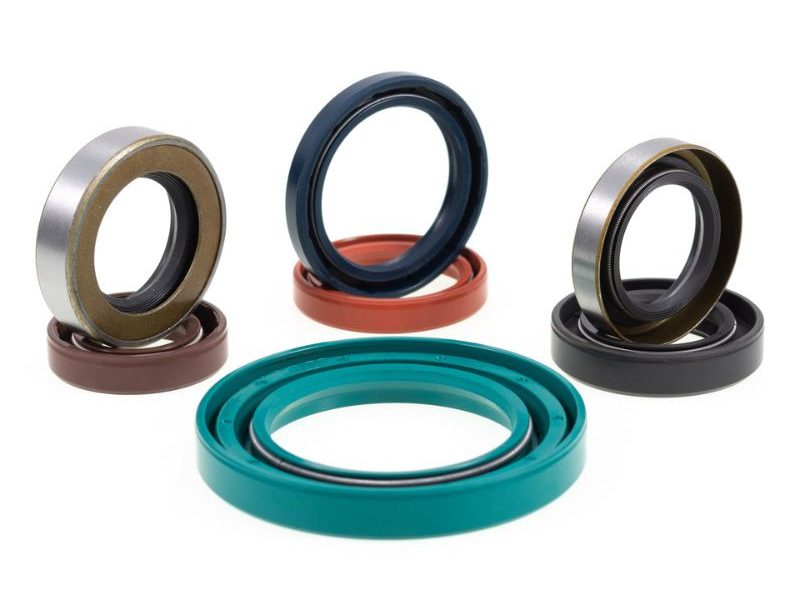Table of Contents
Categories
-
Adapter Sleeves (9)
-
Ball Bearings (11)
-
Ball Screw Bearings (2)
-
Ceramic Bearings (27)
-
Pillow Block Bearings (4)
-
Plain Bearings (32)
-
Roller Bearings (12)
-
Slewing Bearings (43)
-
Sliding Block (3)
-
Stainless Steel Bearings (27)
-
Super Precision Bearings (6)
-
Thin Section Bearings (9)
-
Track Rollers (4)
-
Universal Joints (1)
How Quality Oil Seals Can Reduce Downtime And Maintenance Costs
Introduction
Amid the ongoing transformation of industrial operations, the pursuit of improving efficiency and reducing costs is ever-present. Companies strive to optimize the performance of their machinery, and playing a key role in achieving these goals are often overlooked but indispensable oil seals.
Oil seals are an important part of any machine with moving parts. They are mainly used to prevent lubricating oil leaks and protect bearings from dust and other contaminants, which can damage components and lead to expensive repairs; high-quality oil seals can reduce downtime have a significant impact on maintenance costs
Understand The Importance Of Oil Seals
Is a mechanical protector
- Prevent contaminants from penetrating: Oil seals act as critical protectors in rotating equipment, preventing external contaminants from entering critical mechanical components. This is critical to maintaining equipment reliability, as the intrusion of contaminants can cause friction, wear and mechanical failure.
- Maintaining Lubricant Integrity: Oil seals ensure that lubricant does not leak, maintaining an ideal environment between mechanical components. This is essential to reduce wear, friction and heat generation, helping to keep equipment running smoothly.
Is a core factor in reducing downtime
- Preventive Maintenance: Quality oil seals reduce unplanned downtime by effectively stopping lubricant leaks. This approach to preventive maintenance reduces the risk of sudden damage to mechanical components and increases equipment availability.
- Improve equipment reliability: The quality of oil seals directly affects the reliability of equipment. High-quality oil seals maintain stability under extreme conditions, reducing mechanical failures caused by oil leakage, thereby ensuring stable operation of the equipment.
It is a key element to improve mechanical efficiency
- Reduce energy loss: By reducing oil leakage, high-quality oil seals help to maximize the retention of lubricant in the mechanical system, thereby reducing energy loss. This provides a sustainable impetus for improving machine efficiency.
- Extended mechanical life: Oil seals are more than just a barrier against leaks, they also reduce wear and corrosion on mechanical components. This is essential to extend the mechanical life and extend the maintenance cycle.
Is a strategic component of cost-effectiveness
- Reduced Maintenance Costs: High-quality oil seals achieve significant maintenance cost reductions by reducing unplanned downtime, reducing the frequency of sudden failures and extending machinery life.
- Minimize replacement and upgrade costs: The use of high-quality oil seals reduces replacement and upgrade costs due to frequent failures. This provides businesses with budget stability and reduces reliance on emergency repairs.
Precautions For Selecting And Using High-quality Oil Seals
- Choosing the Right Oil Seal: When selecting an oil seal, you need to consider the material, size, and design of the oil seal to ensure it will meet the needs of your equipment.
- Correctly install the oil seal: Before installing the oil seal, you need to ensure that the oil seal is installed correctly to ensure normal operation and extend the life of the oil seal.
- Regularly check the usage of the oil seal: Check the usage of the oil seal regularly to ensure its normal operation and extend its life.
Correct Oil Seals Installation Steps
- Check whether there are dust, sand and other impurities on the oil seal surface and lip to prevent these substances from damaging the lip and shaft during shaft movement and causing leakage.
- Make sure the shaft surface and mounting holes are clean and free of scratches or burrs
- Choose the appropriate oil seal direction. Oil seals usually have an inner lip and an outer lip.
- Before installing the oil seal, make sure the shaft surface and mounting hole are clean and free of scratches or burrs
- When installing the oil seal, please use a special clamp to prevent the oil seal from tilting during installation.
- When assembling into the cavity, pay attention to the installation direction of the oil seal so that the sealing lip faces the side where the seal is introduced.
- During installation, ensure that the oil seal is fully lubricated to maintain good sealing performance during shaft movement


Conclusion
Quality oil seals are an important investment for any machine that uses moving parts. By choosing the right oil seal for your machine, you can help to reduce downtime and maintenance costs, extend the lifespan of the machine, and improve its efficiency
References
- 1. More detailed information about “oil seals” from KOYO ;
- 2.something about “oil seals” from BARNWELL



















